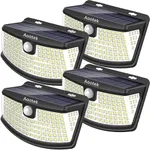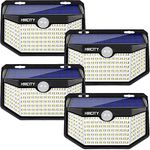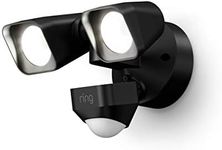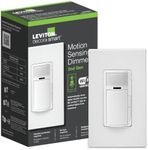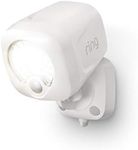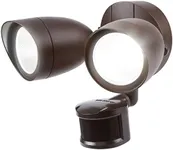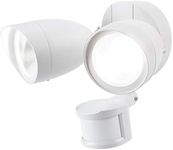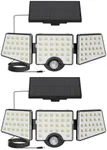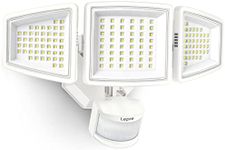Buying Guide for the Best Motion Sensor Lights
Motion sensor lights are a great addition to any home or business, providing both security and convenience. These lights automatically turn on when they detect movement, which can deter intruders and make it easier to navigate in the dark. When choosing the right motion sensor light for your needs, it's important to consider several key specifications to ensure you get the best performance and functionality.Detection RangeThe detection range is the distance at which the motion sensor can detect movement. This is important because it determines how far away an object or person can be before the light is activated. Detection ranges typically vary from 10 to 70 feet. For small areas like porches or patios, a shorter range (10-20 feet) may be sufficient. For larger areas like driveways or backyards, a longer range (30-70 feet) is more appropriate. Consider the size of the area you want to cover when choosing the detection range.
Detection AngleThe detection angle is the width of the area that the motion sensor can monitor, usually measured in degrees. This is important because it affects how wide an area the sensor can cover. Detection angles typically range from 90 to 270 degrees. For narrow spaces like walkways, a smaller angle (90-120 degrees) may be adequate. For wider areas like gardens or parking lots, a larger angle (180-270 degrees) is better. Think about the layout of the area you want to illuminate to determine the appropriate detection angle.
Light Output (Lumens)Light output, measured in lumens, indicates how bright the light will be. This is important for ensuring that the area is well-lit when the motion sensor is triggered. Light output can range from a few hundred to several thousand lumens. For small, enclosed areas, lower lumens (300-700) may be sufficient. For larger, open areas, higher lumens (1000-3000) are recommended. Consider the level of brightness you need based on the size and purpose of the area.
Power SourceMotion sensor lights can be powered by different sources, including hardwired electricity, batteries, or solar power. This is important because it affects installation and maintenance. Hardwired lights are reliable but may require professional installation. Battery-powered lights are easy to install but need regular battery replacements. Solar-powered lights are eco-friendly and cost-effective but depend on sunlight exposure. Choose the power source that best fits your installation capabilities and maintenance preferences.
Weather ResistanceWeather resistance indicates how well the motion sensor light can withstand various weather conditions. This is important for ensuring durability and longevity, especially for outdoor lights. Look for lights with an IP (Ingress Protection) rating, which measures resistance to dust and water. An IP rating of at least IP44 is suitable for most outdoor environments. For harsher conditions, consider a higher rating like IP65 or IP67. Think about the typical weather in your area when selecting the weather resistance level.
Adjustable SettingsAdjustable settings allow you to customize the motion sensor light's performance, such as sensitivity, duration, and light level. This is important for tailoring the light to your specific needs. Sensitivity adjustment lets you control how easily the sensor is triggered. Duration adjustment allows you to set how long the light stays on after activation. Light level adjustment lets you control the brightness. Consider your preferences and the specific requirements of your space when looking for adjustable settings.
